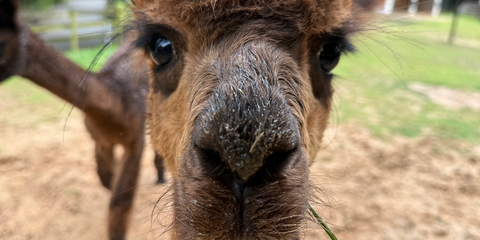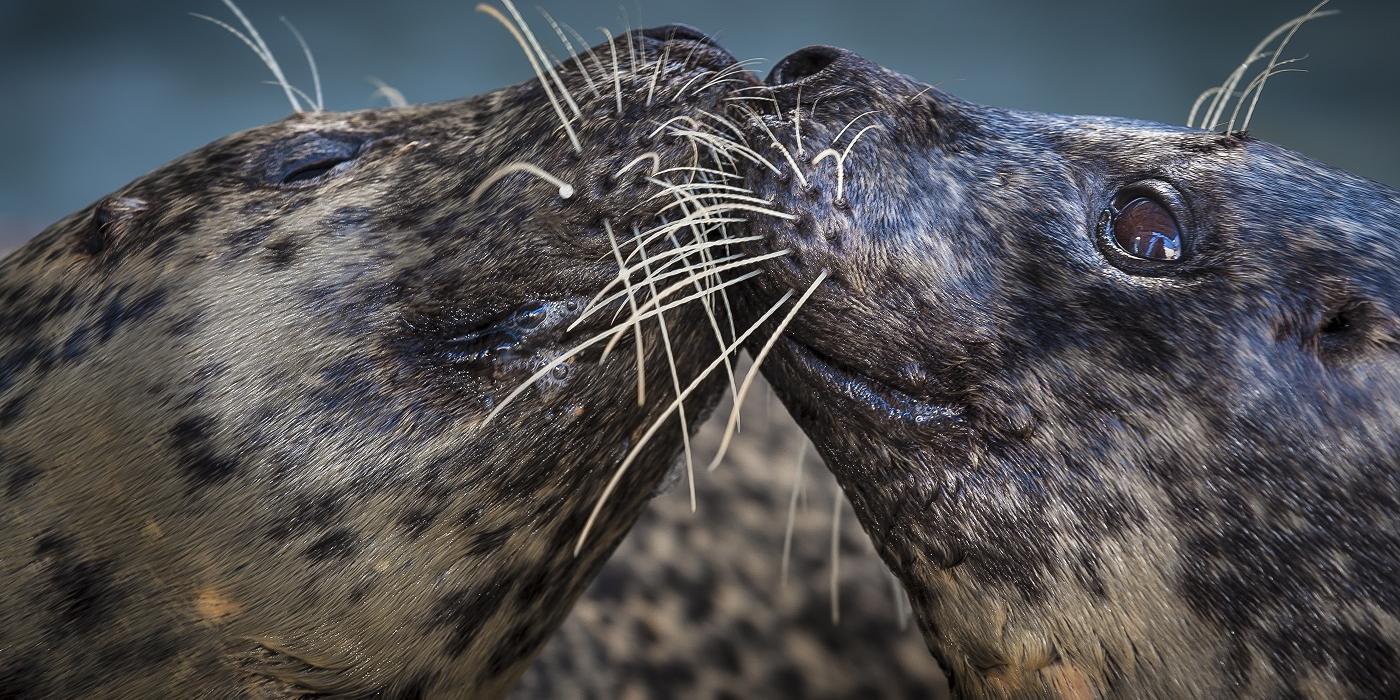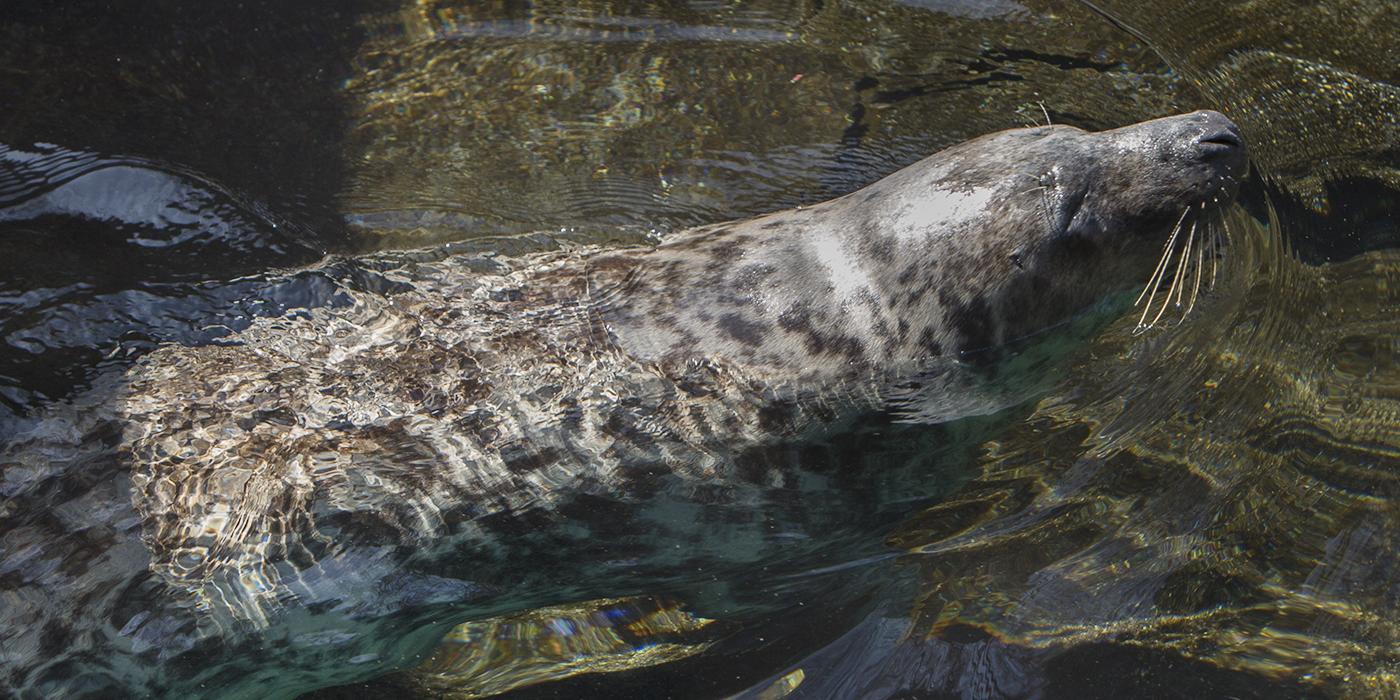Physical Description
Harbor seal coloration can vary greatly from white or light gray with dark spots to dark brownish black with light spots, depending on where in their range they are found.
Like other pinnipeds, harbor seals are adapted to dive and conserve oxygen underwater. They can generally dive to depths of about 500 feet (152 meters), but dives up to 1,460 feet (446 meters) have been recorded. They can remain submerged for up to 30 minutes at a time, but the average dive lasts less than three minutes given that most of their prey lives in shallower depths.
Before a deep dive, harbor seals exhale to reduce the amount of oxygen in their lungs, relying instead on stored oxygen in their blood and muscle tissues. Blood is shunted away from the extremities and concentrated on maintaining the core functions of the brain, heart and lungs where it is needed.
Harbor seals also slow their heart rates from upwards of 80-120 beats per minute to as few as three or four. After surfacing, the seal's heartbeat accelerates rapidly for a short period of time.
These seals have a higher metabolic rate than other mammals of comparable size, which allows them to generate heat to keep warm (typically about 1 degree warmer than the surrounding water temperature). A thick layer of insulating blubber provides thermoregulation and a nutrient reserve for fasting periods.
During the winter, the blubber layer can account for up to 30 percent of a harbor seal's body mass. Other adaptations to prevent heat loss include the ability to shunt blood to vessels in their extremities and skin to conserve heat at their core.
Size
Adult male harbor seals weigh 120-300 pounds (55-130 kilograms) and are between 5 and 6 feet (1.5 and 1.8 meters) long. Adult females are slightly smaller than their male counterparts, weighing 100-190 pounds (45-87 kilograms) and averaging between 4 and 5 feet (1.2 and 1.5 meters) long.
Native Habitat
Harbor seals have the widest distribution of any seal and can be found in both the North Atlantic and Northern Pacific oceans.
On the West coast of North America, their distribution spans from the Southern Arctic (Yukon to northern Alaska) down the California coastline and on the East coast from South Greenland, the Hudson Bay and down the coastline to the Carolinas. They can be found anywhere from cool, temperate waters to cold, arctic and subarctic coasts.
Harbor seals spend half their time on land resting, breeding and raising their young on both rocky and sandy beaches. They do not migrate and will remain in the same general area unless the search for food requires that they move. Some recent tagging studies have shown that juvenile animals may travel greater distances.
Lifespan
Harbor seals in the wild can live between 25 and 30 years and for more than 30 years in human care.
Communication
Many individuals take part in biting, head butting, snorting, growling, flipper waving and other behaviors to keep others away from them.
Harbor seals spend the majority of their time staying alert for predators, such as polar bears, orcas and sharks. Regardless of whether a seal is alone or in a group, it will let out an alarm call and flee, usually by diving into the water, if it senses danger.
In addition to using vocalizations to warn of or ward off danger, seals also vocalize to establish hierarchy and to keep mothers and pups together.
Food/Eating Habits
Harbor seals are opportunistic feeders and primarily eat fish, such as rockfish, herring, cod, mackerel, flounder and salmon. They also eat squid, clams, octopus, crayfish, crabs and shrimp when available.
They wait until the tide comes in to feed, and some may even follow fish runs with the high tides in spring. Seals that follow fish runs for food then wait to return to the coastal waters in the fall. Harbor seals frequently swallow their food whole.
At the Smithsonian's National Zoo, harbor seals eat herring, capelin, squid, butterfish and mackerel.
Social Structure
Although harbor seals are mainly a solitary species, they can be extremely gregarious, especially on land and during the breeding season. Due to their naturally solitary lifestyle, they can become very antagonistic toward each other when groups of several hundred congregate together on shore during the breeding season.
Reproduction and Development
Male harbor seals generally mate with multiple females in a breeding season. The males initiate mating by chasing, neck and flipper biting, and embracing. When approached, females respond by growling, head thrusting and flipper waving. Copulation usually takes place in the water, which occurs very shortly after weaning the young conceived during the previous breeding season. Several hundred animals will move ashore at one time for the breeding season, which ranges from March to August.
The peak of births varies widely between areas. Harbor seals can be born as early as February in Baja California and as late as July in Europe. Mothers give birth to one pup after a gestation period of 10 1/2 to 11 months. The seal pups average 2.5-3 feet (75-100 centimeters) in length and weigh between about 22 and 26 pounds (10 and 12 kilograms) at birth.
Mothers nurse their pups for about four weeks after birth. Although pups can immediately swim on their own, they will often stay on their mother's back while she dives and remain very close to her until they mature. Harbor seals reach sexual maturity when they are 3-7 years old.
Following the pupping season, seals molt. They remain hauled out on the shore during this time to avoid heat and energy loss.
Conservation Efforts
On a global scale, harbor seals benefit from large and stable populations that do not qualify them under a threatened category. However, the International Union for Conservation of Nature still recommends the protection and observation of this species from a conservation standpoint.
Historically, harbor seals have suffered population drops due to viral diseases similar to distemper, as well as from water pollution and habitat loss. They are also threatened by humans through hunting and commercial fishing practices.
Harbor seals have learned how to steal fish from fishing nets, resulting in damage to nets and angering fishermen and fisheries in these areas. Harbor seals also consume the fish in these areas, which could result in lower yields for fisheries. Other threats include overfishing, which results in a loss of resources.
In the U.S., harbor seals are protected under the Marine Mammal Protection Act of 1972. With the exception of licensed hunting, this Act protects harbor seals from all other threats, including the importat of parts or products from all seals.
From a conservation standpoint, adherence to these legal protection as well as the safekeeping of waterways will help harbor seals to survive in their current habitats without fear of hunting, pollution or habitat loss.
Help this Species
- Organize or attend a stream, river, lake or other waterway cleanup in your area to preserve aquatic habitats for local species.
- Avoid single-use plastics, such as plastic bottles, bags and utensils. Choosing reusable options instead can help reduce plastic pollution.
- Protect local waterways by using fewer pesticides when caring for your garden or lawn. Using fertilizers sparingly, keeping storm drains free of litter and picking up after your pet can also improve watershed health.
- Never release balloons. Animals often mistake them for food or become entangled in their strings. Looking for an alternative? Try blowing bubbles instead!
Animal News

Zoo Welcomes Alpacas ‘Rainstorm’ and ‘Coffee Cup’




